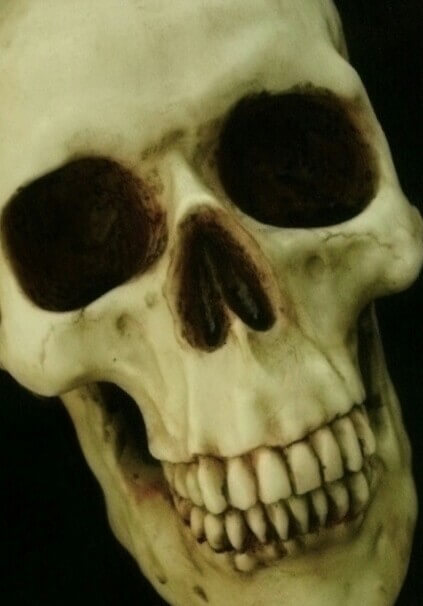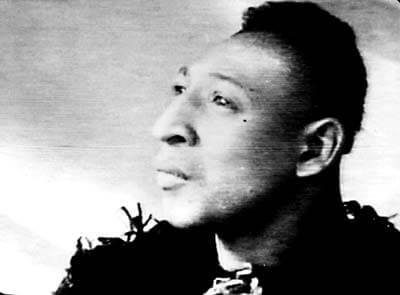In 1842, William Henry Johnson (aka Zip the Pinhead) was born into a destitute African-American family. His parents were Mahalia and William Johnson, both of which were former slaves. William was one of six children. His unique physical characteristics would soon become very beneficial for the Johnson family.
Although the rest of William’s body grew as expected, his head seemed to remain the same. With a tapered cranium and heavy jaw, he caught the eye of agents from a circus in Somerville, New Jersey. His unique characteristics led to many believing he was microcephalic, frequently referred to as a ‘pinhead.’
Microcephaly

“symptoms of microcephaly” by Beth.Herlin CC BY-SA 4.0
An individual who is born with microcephaly has a small, elongated cranium. Microcephaly is a neurological disorder and many of the people who have microcephaly (i.e. Schlitzie The Pinhead) also have intellectual disabilities: However, it has been said that William Henry did not have any type of intellectual disability.
William Henry: A Missing Link
William Henry’s parents decided that they would allow New Jersey’s van Emburgh’s Circus to display their son for financial gain.
The circus billed William as ‘A Missing Link.’ He was placed in a cage for display and audiences were told that he was caught in Africa. As William’s popularity grew, his agent decided to reach out to showman P.T. Barnum.
After seeing William, P.T. Barnum decided that he wanted to add him to his own show. Therefore, he asked New Jersey’s van Emburgh’s Circus if he could purchase the right to display William. The circus sold Barnum the rights and William received an entirely new look.
“Zip the Pinhead: What Is It?”
Barnum had a furry suit custom-tailored to fit William and to accent his sloping brow, his hair was styled in such a way as to make it end in a tiny point at the top of his head.
The background story that audiences were told by P.T. Barnum was the same story that the circus had used. Barnum offered a bit more information related to the ‘Wildman’ than the circus did. Audiences were told that William survived by eating raw meat, fruit and nuts: However, he was learning to eat civilized foods. While performing, Zip would never speak and would simply grunt when asked a question or addressed. Barnum stated that Zip was discovered during a gorilla-hunting expedition in Western Africa, near the Gambia River. He also stated that Zip belonged to a naked race of men who traveled about via tree branches.
After telling his back story, William (now referred to as Zip) would be revealed to the audience standing in his cage and rattling the bars while he screeched. Supposedly, Barnum agreed to pay Zip a dollar every day to stay quiet and remain in character.
Zip’s act was extremely successful and can be compared to the success achieved by the famous Siamese twins Eng and Chang Bunker.
Charles Dickens Attends a Performance
As a personal guest of P.T. Barnum, Charles Dickens attended one of Zip’s performances. While Dickens watched Zip behaving like a madman on stage, he leaned toward Barnum and asked, “What is it?” This reaction excited Barnum and he began using the phrase on pamphlets, poster and billboards. Zip brought in audiences consistently and received a decent compensation for his performances ($100/week and $1/day ‘hush money’).
The Wild Man is Tamed
As time passed, Zip’s act became more refined and he shared the stage with a variety of other individuals with unique characteristics. Some of these individuals included Jack Earle – The Tallest Man in the World, Jim Tarver – The Texas Giant and Koo-Koo the Bird Girl. Zip frequently traveled with the Ringling Brothers Circus as well.
Zip’s Transformation to Become ‘The Playful Pinhead’
Zip continued working even after Barnum’s solo ventures dissolved. He was frequently featured at Coney Island as well as in dime museums throughout the U.S. As time passed, William’s character evolved from the original ‘Wildman’ persona to a comedy act. He carried a pop gun and would fire it at performers threatening his popularity. In future performances, Zip would play a violin displaying great enthusiasm; however, he played so poorly that people would actually pay him to stop. This transformation from ‘Wildman’ to comedian led to his new nickname – ‘The Playful Pinhead.’
At this point in time, audiences were well aware of his comedic behavior during performances. When members of the audience would toss coins onto the stage (which was a common action at that time), Zip would toss them back, as if he were insulted. During the Scope Monkey Trial of 1925, William offered himself up as evidence of evolution.
Zip’s Manager and Best Friend, Captain O.K. White
Captain O.K. White looked after Zip’s interests. In addition, White gave Zip one of his most prized possessions, a tuxedo. Zip would wear his tuxedo whenever there was a special occasion. Another one of Zip’s favorite possessions was his fiddle. He bought the fiddle while he was in Kentucky. Allegedly, the fiddle had belonged to Daniel Boone. Although Zip’s fiddling skills were lacking, it is said that audiences loved to see him play his fiddle while dancing about.
Zip Prefers Coney Island
As he aged, Zip preferred performing at Coney Island and avoided traveling. In 1925, Zip heard a little girl crying for help. He looked around and saw a little girl out in the ocean waving her arms, despite the fact that he was in his early 80s, Zip swam out and rescued her. Everyone present who witnessed his bravery cheered.
William’s Dedication to His Career is Admirable
In early 1926, Zip came down with bronchitis, although Zip’s best friend (Captain White) and his physician encouraged him to rest: Zip disregarded their pleas and continued performing his part in a stage play at the New Amsterdam Theater. After the play closed, Zip returned home. He was cared for by his sister, physician and Captain White. His condition continued to worsen, which led to him being moved to New York City’s Bellevue Hospital.
William’s Last Words…
William succumbed to his illness on April 24, 1926, during his stay at Bellevue hospital. According to his sister (Sarah van Duyne), William did not have an intellectual disability and had fair reasoning power. She states that his last words to her were, “Well, we fooled’em for a long time, didn’t we?”
During his nearly 70 years in show business, it is believed that he entertained more than 100 million people. Many of the greatest side show acts of the day attended Zip’s funeral. Captain White was distraught and collapsed during the ceremonies, sadly, he passed away three days later.

Ringling Brothers “Congress of Freaks” lineup in 1924. Do you see sideshow freak Zip the Pinhead second from the left?
A Final Thought
I am disheartened by the fact that William’s parents placed their son on display as a young boy. The resilience of those who are placed in difficult situations is to be commended. Just like Schlitzie The Pinhead, William took the hand he was dealt and turned it into a full house.
Sources:
- https://en.wikipedia.org/wiki/Zip_the_Pinhead
- http://www.obitoftheday.com/post/82196444636/zipthepinhead
Interesting Reads:


